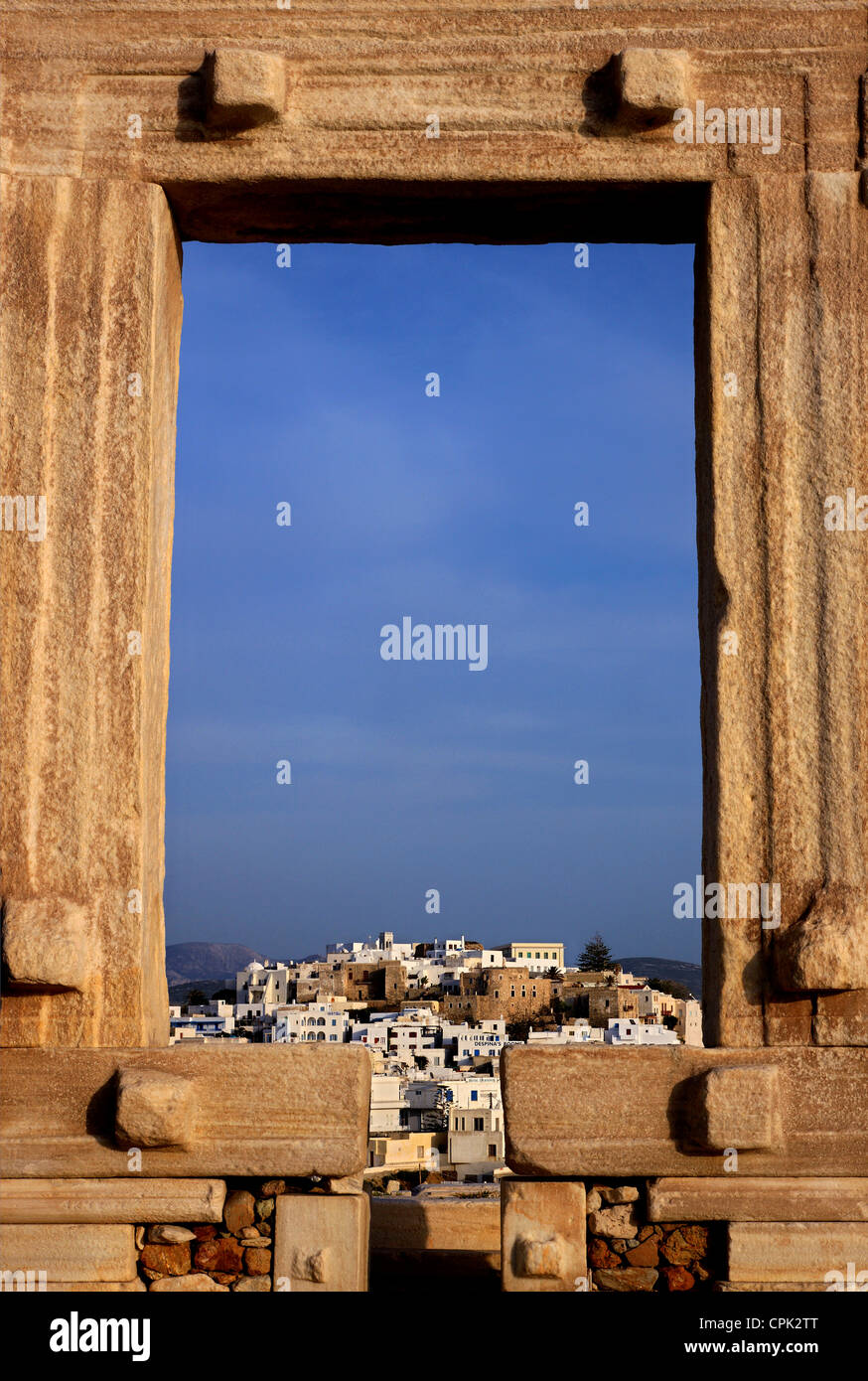The Portara (temple of Apollo) and the Chora ("capital") of Naxos island in the background. Cyclades, Greece

Image details
Contributor:
Hercules Milas / Alamy Stock PhotoImage ID:
CPK2TTFile size:
57.1 MB (3 MB Compressed download)Releases:
Model - no | Property - noDo I need a release?Dimensions:
3664 x 5446 px | 31 x 46.1 cm | 12.2 x 18.2 inches | 300dpiDate taken:
1 May 2012Location:
Portara (temple of Apollo), Chora of Naxos, Naxos island, Cyclades, Greece, EuropeMore information:
The Portara (temple of Apollo) and the Chora ("capital") of Naxos island in the background. Cyclades, Greece. The Portara or the “Great Door” is essentially a massive marble doorway, leading to nowhere. It lies close to the port of Naxos on the islet of Palatia which was once a hill. A strip of land connected the north of the port of Naxos to Palatia in ancient times. Today, the strip of land has been replaced by a causeway. Myth has it that the islet of Palatia was exactly where Ariadne, the Minoan princess was abandoned by her lover, Theseus after he killed Minotaur on the island of Crete. Around the year 530 B.C when Naxos was at its peak of glory, the then ruler, Lygdamis wanted to build the highest and most magnificent buildings in all of Greece in Naxos. He ordered for a massive temple to be built but when a war broke out between Naxos and Samos, the work stopped abruptly. After that, Lygdamis was overthrown in 506 B.C and the temple, which was supposed to be at least a hundred feet tall, was never completed. Today all that remains of that temple is the Portara. The temple was supposed to be Ionic, 59 m long and 28 m wide with a peristyle of 6x12 columns with double porticos at its end. It is believed that this temple was to be built in the honor of Apollo, the Greek God who protected music and poets. Proof of this lies in the fact that the temple faces in the direction of Delos, which is believed to be Apollo’s birthplace. However, some scholars believe that this temple was to be built in the honor of Dionysus, the God of wine and patron God of Naxos. The gate is around 6 m high and 3.5 m wide built with four separate columns. Each column weighs about 20 tons. During the Middle Ages, a church was built behind the Portara. Later under Venetian rule, it was dismantled so that the marble could be used to build the “Kastro” which is a fortress built during the time of the Venetians and other monuments and buildings.